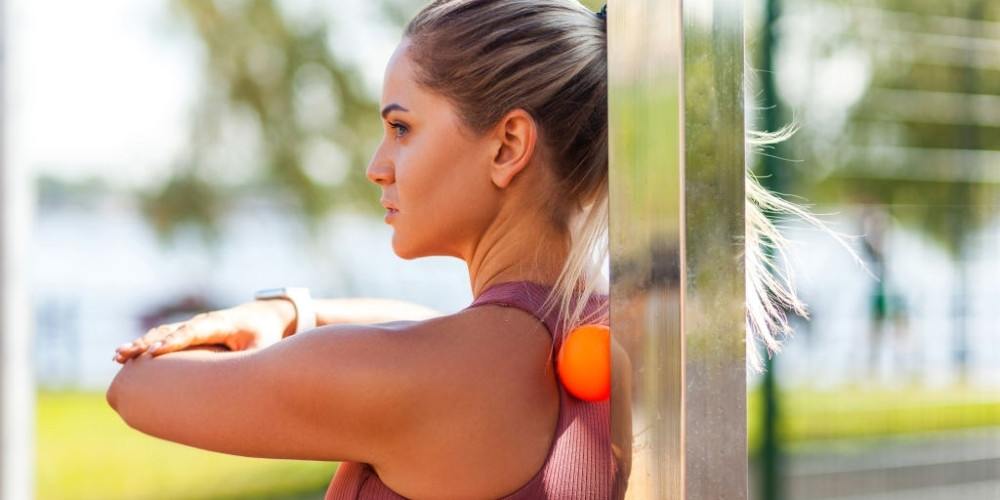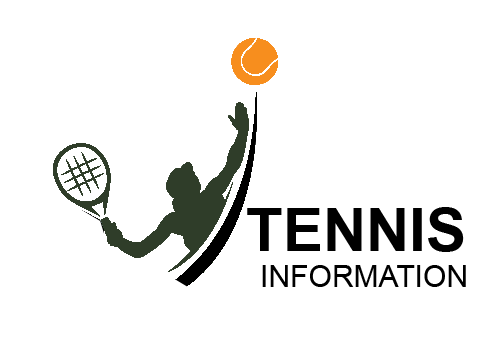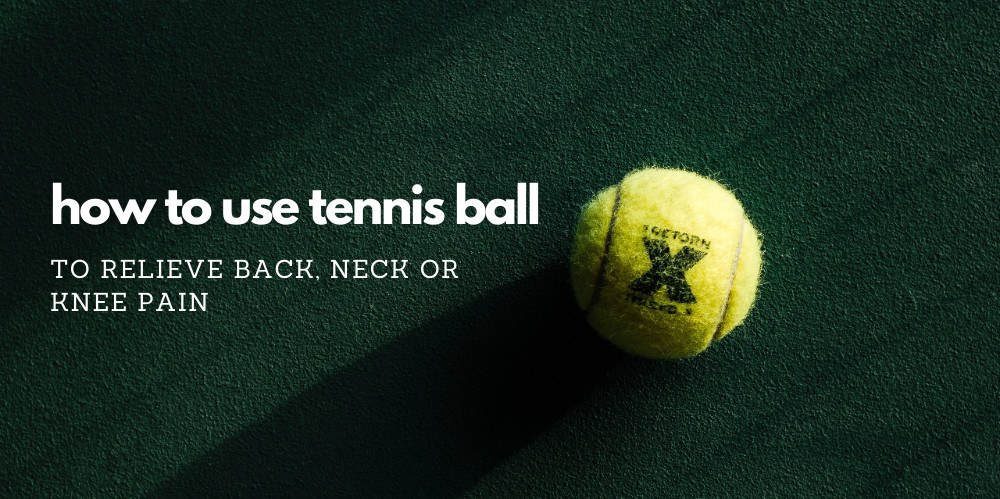Welcome to this Physiotherapeutic Uses of Tennis Ball article! The myofascial syndrome is a muscle pain that usually occurs in a particular muscle and is caused by overload or repetitive trauma. Although the treatment for each patient suffering from Myofascial syndrome is different such as posture alteration, application of cold or heat, stretching, and massage. In this article, we will present another technique that gets rid of this pain quickly.
The method that we would like to introduce to you is tennis balls (Physiotherapeutic Uses of Tennis Ball). They have perfect elasticity to relax the muscles and relieve pain. Here are some guidelines that help you use them to relieve pain in different parts of the body:
If you don't have a tennis ball, then here is the list of great tennis balls reviewed carfully by me and my team. These balls will not only relieve your pain but also play a great part of the tennis game. No more words, let's dive in!
#1. Neck Pain
The sub-occipital muscles need to take a rest after a long working day at the office. This exercise can help you relax and relieve neck pain.
Lying on the floor at your back and place a tennis ball under your neck. Next, keep this position for a minute and then change the direction of the head by turning it from side to side. Afterward, keep your head to the side, nod, and then repeat the movement to the opposite side.
If you don't want to do exercise, there might be an automated way to do it: the handheld massager. The handheld massager is the appropriate solution, not to say the best option, for relieving neck or back pain.
#2. Back pain
Back pain caused by wearing uncomfortable shoes, a wrong sleeping position, or an inadequate way of sitting. If your back hurts, try this exercise to relieve tension:

Put all two tennis balls under your back, between the coccyx and the ribs, and move the pelvis to both sides and then let the balls move around the back. Next, breathe deeply and repeat the movements for every five minutes.
#3. Stiff shoulders
This exercise will stretch and relax the cuff muscles as well as relieve shoulder pain, which is probably the result of poor body posture or heavy lifting. The instruction is:
Lying on the floor at your back, put a tennis ball behind each shoulder and start rotating them.
#4. Hip pain
If you wear uncomfortable shoes, are sitting for a long time, or take more excessive pressure on the hips, you may experience pain in the muscles that hold the pelvis such as the piriformis, the gluteus maximus, or the gluteus medius. It is the best way to relieve that pain.
Lie on the floor face down, place a ball between your hip and the floor, and lean on it. Make twelve slow circles and change sides.
#5. Chest Pain
Daily activities such as cooking, using the phone, or spending long hours sitting in front of the computer may cause compressed your chest. Moreover, it can create respiratory difficulties and problems in the nervous system. With this exercise, you can deal with that problem.
Stand in front of the corner of a wall and place the tennis ball under the collarbone. Take a deep breath and stay that way for a minute.
Next, move the clavicle up and down and from side to side. To increase muscle mobility, you can move your arm and neck for a minute and then change the side.
#6. Knees tight
This exercise can help you relax the muscles between the patella, the bones of the leg, and the thigh. Let’s sit in a chair, bend your knees and place the tennis ball on the back of your knee. Squeeze and relax ten times.
#7. Bad posture
Inadequate body posture can significantly damage the muscles of the spine and cause difficulty breathing. Therefore, lie on your back and place two balls on the sides of your back. Raise your head to your chest and raise your hips. The hands should be behind the head while lifting. Take a deep breath and rotate the tennis balls on your back for four minutes.
#8. Sore hands
If you write for a long time, you may feel pressure on the muscles of the hands. Place the tennis ball on a table and put your hand on it. Then put your other hand on it and press as if you wanted to push the ball down. Move the ball horizontally for three minutes and repeat the process with the other hand.
#9. Feet tired
Due to long periods of standing or wearing inappropriate shoes, you may experience pain as well as plantar fasciitis and pain in the upper back. To relieve the pain, place the ball on the floor and stand with one foot on it. Next, start rolling the ball up and down by moving your foot for a minute. Once you finish with one foot, repeat the same with the other.
#10. Quadriceps
Tennis balls will release tension in the outer muscles of the quadriceps or the vastus lateral. Let’s sit on the floor and place two balls on the outside of your thigh. Bend and straighten your knee slowly twenty times. Then move the thigh from side to side and allow the ball to move across the side of your thigh. Next, perform the movement for a sum of two minutes and repeat with the other side.
References: 8 physio-approved at-home exercises you can do at home with a tennis ball
Final Words
So that's the 10 Physiotherapeutic exercises. I hope that this list with your spare tennis balls will be helpful to you. If there is any suggestion or question, please don't hesitate to leave me a message via emails or the comment section.




